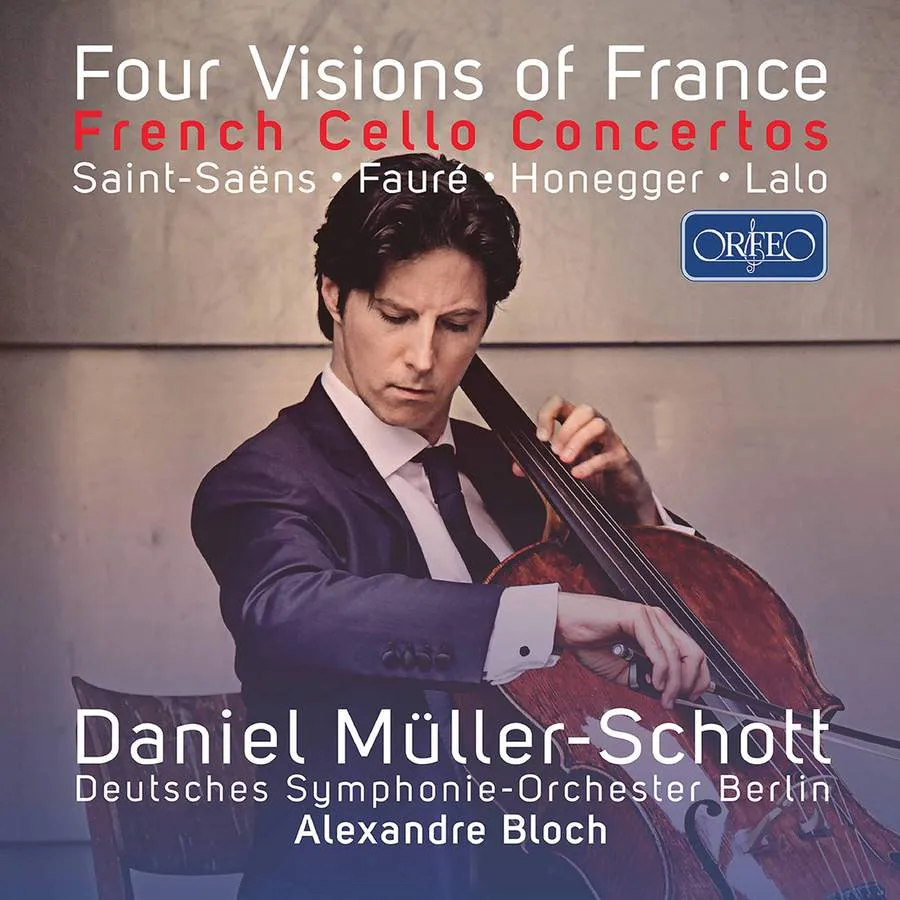
Four Visions of France Saint-Saëns: Cello Concerto No. 1; Romance in F, Op. 36; Fauré: Elegie in C minor, Op. 24; Honegger: Cello Concerto; Lalo: Cello Concerto Daniel Müller-Schott (cello); Deutsche Symphonie-Orchestra Berlin/Alexandre Bloch Orfeo C988211 67:08 mins
‘Four Visions of France’ describes this disc accurately, charting the alternations of passion and restraint that have marked French music over the last 150 years. The German cellist Daniel Müller-Schott has the technique to project the disc’s multitude of moods and to move seamlessly from virtuosity to sensuousness and back again. My only reservation is not his fault. In Lalo’s own time, people criticised his noisy orchestration, and in his Concerto the cello is given the impossible task of living on equal terms with the full brass. This is a great pity, when so many of the quieter passages show the composer at his best.
The Saint-Saëns Concerto is a joy from start to finish, even the most fiendish moments being delivered with aplomb. In the Honegger Concerto the lightly swung passages, betraying their date of 1929, are contrasted with contemporaneous bitonal ones in a way that brings both together, avoiding the episodic effect this concerto can sometimes produce. Honegger was a great believer in the value of the individual, so he followed 18th-century precedent in allowing the performer to compose his own cadenza at the end of the central movement: Müller-Schott does the honours, at a shorter length than that of the dedicatee, the cellist Maurice Maréchal, with rather more melodic interest and less scratchy virtuosity.
Of the two short pieces included here, Fauré’s Ėlégie is by far the more interesting, dating from 1880 and described by Jean-Michel Nectoux, the doyen of Fauré scholars, as ‘the last year in which Fauré permitted himself such a direct expression of pathos’.
Roger Nichols
